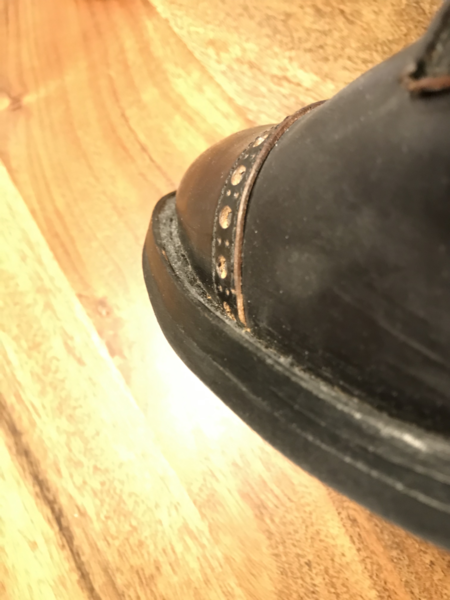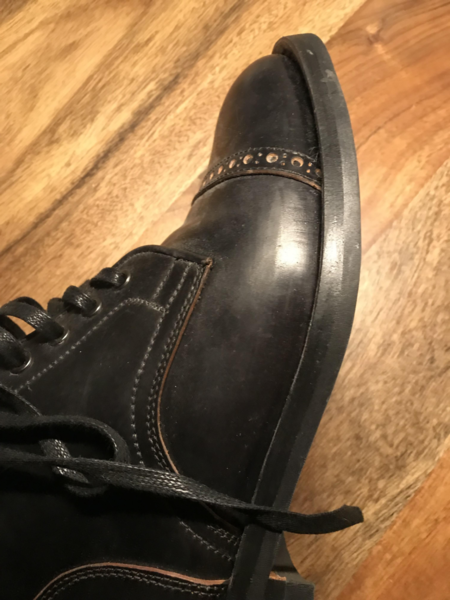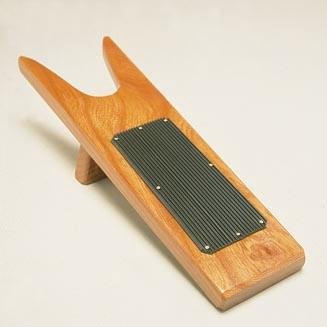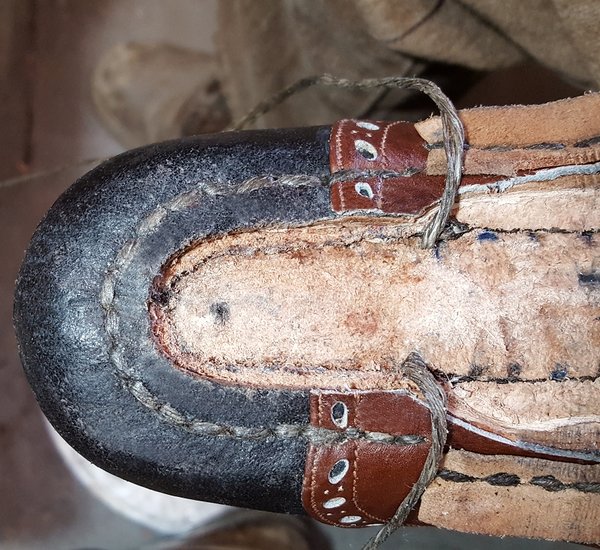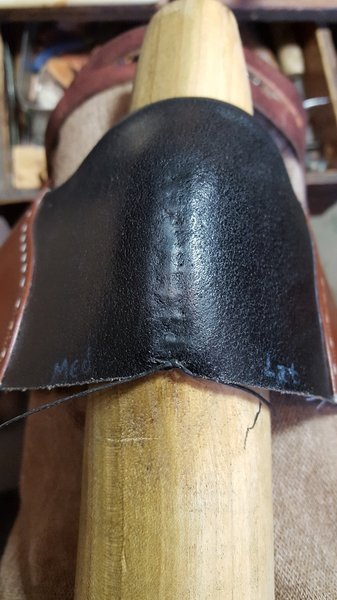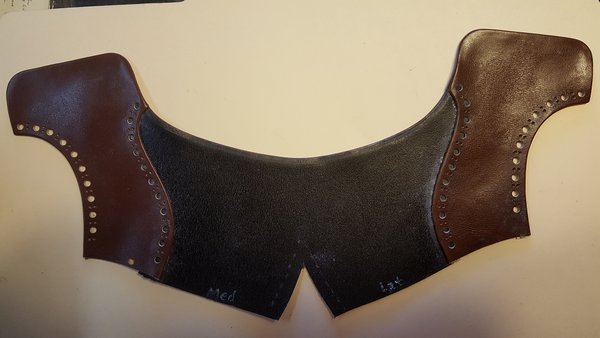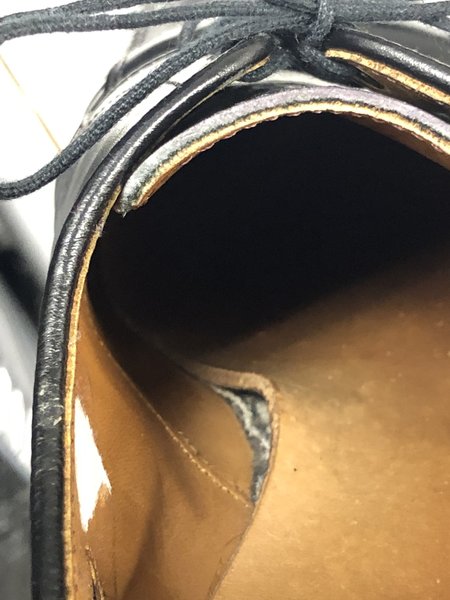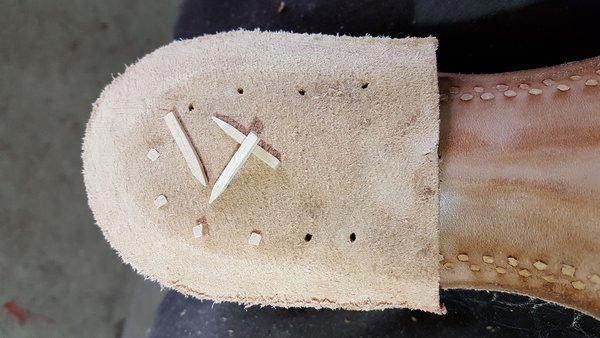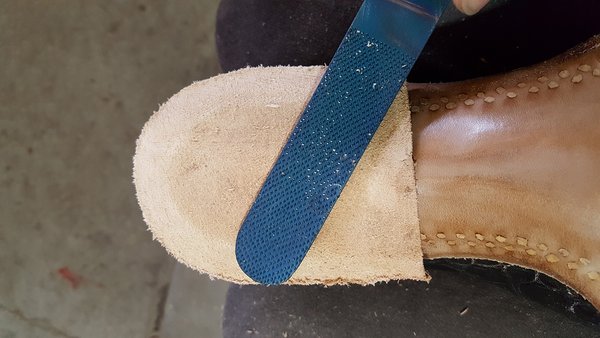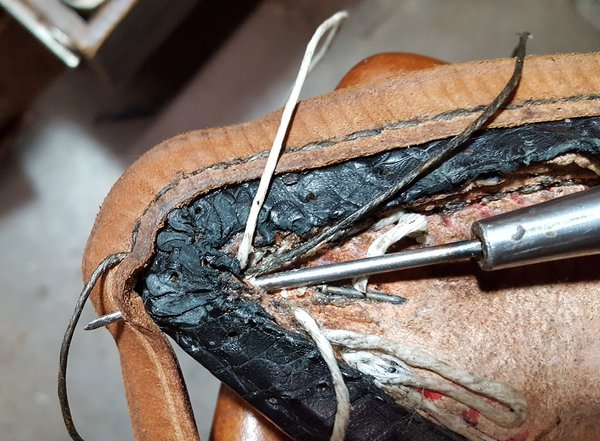- Joined
- Jan 8, 2008
- Messages
- 10,132
- Reaction score
- 5,714
Well, that debunks the whole notion...long held...of breathe-ability, doesn't it? But having customers who, through genetics or exertion, sweat copiously, I have seen no evidence that we stand around in leather buckets of water until such time as we can take off our boots. To the contrary, and in point of fact, I have seen a number of boots and shoes that were literally sweat stained. Indicating an easy and natural migration of moisture to the atmosphere.
And yet I have seen (and posted on this forum some years ago) scientific studies that indicate that the shoe does become a petri dish and which (the studies) end up recommending that "occlusive" footwear be "avoided." I don't want to dig that information out again but it is here somewhere. And IIRC, it came from an internationally recognized organization of orthopedists.
What's more, I have personal experience with contracting foot diseases from used (vintage) shoes. This is such a prevalent problem, in fact, that special "potions" have been concocted, and devices that emit ultraviolet light manufactured, to counteract it....specifically in "vintage" shoes but also as an ongoing preventive measure for new shoes.
With all due respect, I don't dismiss logic quite as easily as you seem to be doing (correct me if I'm wrong) nor, given enough direct or even incidental evidence, dismiss it as supposition, but it only makes sense that when you have bodily fluids mixing with resident bacteria and a natural, organic food source and then add warmth, that something akin to a petri dish would arise.
I have made all the same points...have acknowledged and conceded that rubber has its strengths. Just as leather has its own. Do I use rubber for toplifts? Yes, I do. Make no apologies, either. One of...maybe the greatest...strength of rubber is its traction attributes. I just don't think that given an adequate gait profile it is significantly better than leather except in certain places on the shoe and in certain environments. The heel being one of those.
And it is lots uglier, less responsive to Craftsmanship, and many times more damaging to personal as well as environmental health.
Beyond that I have nothing against naugahyde per se. Or corrected grain leather, for that matter. Or even rubber outsoles. But there is a disconnect between buying high end, expensive shoes, ostensibly made from a luxury commodity such as leather, and then desecrating them with adjuncts whose only true purpose is to let the customer avoid the necessities of owning luxury goods.
It is, in fact, the self-same disconnect that everyone here on SF would acknowledge (and decry) if putting leather elbow patches on a Saville Row suit were to be proposed.
If a person wants the extra-ordinary durability and water-resistance of plastic or rubber in their footwear, that's fine with me. Go for it. But don't try to justify or dismiss the logical implications of that impulse.
My purpose...my "raison d'etre" as I said in an earlier post...is making the best shoes I can. It is not to be an out-in-the-street activist against the unfairness or unseemliness of synthetics. My reason for starting this thread and for posting to this forum is to advocate for Craftsmanship (with a capital "C"), Traditional shoemaking, and the appreciation of it.
Trade-offs and "preferences" are fine...in their place and acknowledged. Justifications that are in stark contrast to what we say we want or the posture we present to the world are more problematic...for me at least. Doubly problematic for my ideas about what it means to be a Craftsman / shoemaker and to bear, accordingly, a certain responsibility.
edited for punctuation and clarity
I think in part you misunderstood me -- I believe what happens to sweat is that it is absorbed into the shoe insole and lining (and of course the socks); a bit of it may manage to evaporate while the shoe is in wear, due to air moving around inside the shoe as one walks or being wicked to a more evaporation-friendly location by socks, but most is absorbed and retained by those veg-tanned leathers (lining and insole). That water then evaporates after the shoe is taken off, via the exposure of the surface of the insole and the lining. I don't think much moisture will evaporate through the upper or the outsole, though I would guess more would go through the former than the latter, due to thickness and surface area.
Well, that debunks the whole notion...long held...of breathe-ability, doesn't it? But having customers who, through genetics or exertion, sweat copiously, I have seen no evidence that we stand around in leather buckets of water until such time as we can take off our boots. To the contrary, and in point of fact, I have seen a number of boots and shoes that were literally sweat stained. Indicating an easy and natural migration of moisture to the atmosphere.
I think you also make an assumption, which is that using the cement/occlusive material on the bottom of the insole makes the shoe a 'petri dish,'
And yet I have seen (and posted on this forum some years ago) scientific studies that indicate that the shoe does become a petri dish and which (the studies) end up recommending that "occlusive" footwear be "avoided." I don't want to dig that information out again but it is here somewhere. And IIRC, it came from an internationally recognized organization of orthopedists.
What's more, I have personal experience with contracting foot diseases from used (vintage) shoes. This is such a prevalent problem, in fact, that special "potions" have been concocted, and devices that emit ultraviolet light manufactured, to counteract it....specifically in "vintage" shoes but also as an ongoing preventive measure for new shoes.
With all due respect, I don't dismiss logic quite as easily as you seem to be doing (correct me if I'm wrong) nor, given enough direct or even incidental evidence, dismiss it as supposition, but it only makes sense that when you have bodily fluids mixing with resident bacteria and a natural, organic food source and then add warmth, that something akin to a petri dish would arise.
Next, as to this point: "And returning to the origins of this discussion...every argument for rubber outsoles...and by extension, using cement as a moisture barrier ...is an equally valid argument for corrected grain leather and/or naugahyde uppers. Not to mention, celastic stiffeners and plastic heel bases." I think this is not entirely correct. I can make a good argument that a Topy or other rubber outsole has advantages over naked leather in some instances, in terms of perhaps reducing or minimizing both wear and the exposure of the insole to external moisture. Depending on ones use and environment, they may render a more durable and/or safer shoe. I don't see that same logic applying to celastic toe puffs or plastic heel bases. And you also made a point earlier about why not just do away with leather, if it is not adequate? Yet, you use a synthetic heel tip but maintain the balance of the heel lifts of leather. Doesn't that contradict your earlier comment? It is, IMO, a matter of suitability for purpose -- a leather heel lift is very adequate to act as a lift, but not so great as the part of the heel that contacts the ground on a repeated basis. It needs to be aided by something more durable in this instance, be it a rubber tip, nails/slugs, or a metal tip.
I have made all the same points...have acknowledged and conceded that rubber has its strengths. Just as leather has its own. Do I use rubber for toplifts? Yes, I do. Make no apologies, either. One of...maybe the greatest...strength of rubber is its traction attributes. I just don't think that given an adequate gait profile it is significantly better than leather except in certain places on the shoe and in certain environments. The heel being one of those.
And it is lots uglier, less responsive to Craftsmanship, and many times more damaging to personal as well as environmental health.
Beyond that I have nothing against naugahyde per se. Or corrected grain leather, for that matter. Or even rubber outsoles. But there is a disconnect between buying high end, expensive shoes, ostensibly made from a luxury commodity such as leather, and then desecrating them with adjuncts whose only true purpose is to let the customer avoid the necessities of owning luxury goods.
It is, in fact, the self-same disconnect that everyone here on SF would acknowledge (and decry) if putting leather elbow patches on a Saville Row suit were to be proposed.
If a person wants the extra-ordinary durability and water-resistance of plastic or rubber in their footwear, that's fine with me. Go for it. But don't try to justify or dismiss the logical implications of that impulse.
My purpose...my "raison d'etre" as I said in an earlier post...is making the best shoes I can. It is not to be an out-in-the-street activist against the unfairness or unseemliness of synthetics. My reason for starting this thread and for posting to this forum is to advocate for Craftsmanship (with a capital "C"), Traditional shoemaking, and the appreciation of it.
Trade-offs and "preferences" are fine...in their place and acknowledged. Justifications that are in stark contrast to what we say we want or the posture we present to the world are more problematic...for me at least. Doubly problematic for my ideas about what it means to be a Craftsman / shoemaker and to bear, accordingly, a certain responsibility.
edited for punctuation and clarity
Last edited:




